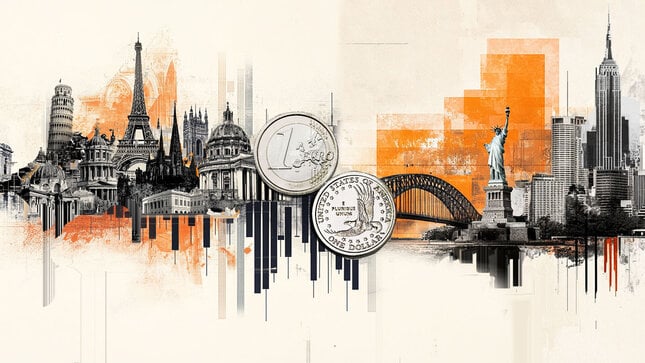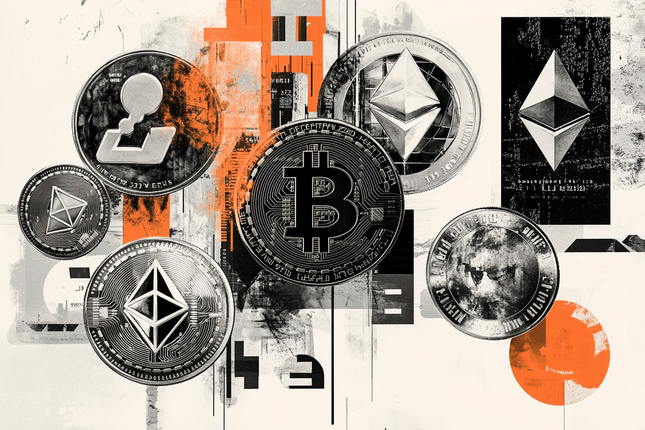When you’re considering investing in precious metals, you are confronted with many options. Silver or gold? Bars or coins? And what in the world is an ETF?
Understanding the differences between an ETF and physical gold and silver is an important first step in the journey to precious metals investing.
ETF is an acronym for “Exchange Traded Fund.” In simplest terms, an ETF represents a basket of investments that trades on the market as a single entity. An ETF could represent just one commodity, such as oil, or it could hold a wide range of assets such as tech stocks. The mix of securities that can potentially be held in an ETF is limited only by your imagination.
Just like stocks, ETFs are sold in shares. The price rises and falls throughout the trading day as they are bought and sold on the market just like a stock or bond.
In the world of precious metals, there are gold and silver ETFs. Some funds hold a mix of metals and others include mining stocks.
For the sake of simplicity, I’ll focus on gold ETFs, but the same principles hold for silver-backed funds.
A gold ETF is backed by metal owned and stored by the issuer. In most cases, investing in an ETF does not entitle you to any amount of physical gold. You own a share of the ETF, not gold itself.
The most popular gold ETF is the SPDR Gold Shares Exchange Traded Fund (GLD). This ETF was established in 2004 and roughly tracks the market price of gold bullion.
So, why would anybody invest in an ETF instead of physical metal?
Simplicity and convenience.
ETFs are relatively liquid. You can buy or sell an ETF with a couple of mouse clicks. You don’t have to worry about transporting or storing metal. In a nutshell, it allows investors to play the gold market without buying full ounces of metal at the spot price.
Since you are just buying a number in a computer you can easily trade your ETF shares for another stock or cash whenever you want, even multiple times on the same day. Many speculative investors take advantage of this liquidity.
But it’s important to understand that investing in an ETF is not the same as owning gold.
While a gold ETF is a convenient way to play the price of gold on the market, you don’t actually possess any gold. You have paper. And you don’t know that the fund you’ve invested in has any gold either.
SPDR claims it backs its entire $52 billion market capitalization in physical bullion. It probably does. But you have no way of knowing for sure. You can’t go inspect the gold in their vault. And they won’t give you the metal you’re investing in if you call them to ask for it.
The fund says it has gold and you’re taking their word for it.
It's important to consider that the investment bank HSBC serves as the custodian of the vault holding SPDR's gold.
This introduces significant counterparty risk.
On the other hand, owning physical gold comes with very little counterparty risk. If you buy gold coins or gold bars and store them in a safe at home, there isn’t another party involved. You know exactly how much gold you have and where it is. There is no other party to default, commit fraud, or make a mistake.
There are plenty of reasons to invest in ETFs, but it is not a substitute for owning physical gold.
Money Metals Exchange and its staff do not act as personal investment advisors for any specific individual. Nor do we advocate the purchase or sale of any regulated security listed on any exchange for any specific individual. Readers and customers should be aware that, although our track record is excellent, investment markets have inherent risks and there can be no guarantee of future profits. Likewise, our past performance does not assure the same future. You are responsible for your investment decisions, and they should be made in consultation with your own advisors. By purchasing through Money Metals, you understand our company not responsible for any losses caused by your investment decisions, nor do we have any claim to any market gains you may enjoy. This Website is provided “as is,” and Money Metals disclaims all warranties (express or implied) and any and all responsibility or liability for the accuracy, legality, reliability, or availability of any content on the Website.
Editors’ Picks

Gold hits fresh record highs above $4,400 amid renewed geopolitical woes
Gold is hitting fresh record highs above $4,400 early Monday, helped by renewed geopolitical tensions. Israel-Iran conflict and US-Venezuela headlines drive investors toward the traditional store of value, Gold.

EUR/USD stays bid above 1.1700 as risk flows dominate
EUR/USD posts small gains above 1.1700 in early European trading hours on Monday. The US Dollar remains broadly subdued amid a risk-on market profile, underpinning the pair.

GBP/USD clings to recovery gains near 1.3400
GBP/USD is clinging to recovery gains near 1.3400 in early Europe on Monday. The pair capitalizes on an upbeat market mood and a steady US Dollar as traders digest the recent
monetary policy decisions by the Fed and the BoE.

Bitcoin, Ethereum and Ripple eye breakout for fresh recovery
Bitcoin, Ethereum, and Ripple are approaching key technical levels at the time of writing on Monday as the broader crypto market stabilizes. Market participants are closely watching whether BTC, ETH, and XRP can sustain breakouts and achieve decisive daily closes above nearby resistance levels, which could signal the start of a short-term recovery.

De-dollarisation by design: Gold’s partner in the new system
You don’t need another 2008 for the system to reset. You just need enough nations to stop settling trade in dollars. And that’s already happening. "If gold is the anchor, what actually moves value in a post-dollar world?” It’s a question most gold investors overlook. We think in terms of storage and preservation, but in the new rails being built, settlement speed matters just as much as soundness of money.
RECOMMENDED LESSONS
Making money in forex is easy if you know how the bankers trade!
I’m often mystified in my educational forex articles why so many traders struggle to make consistent money out of forex trading. The answer has more to do with what they don’t know than what they do know. After working in investment banks for 20 years many of which were as a Chief trader its second knowledge how to extract cash out of the market.
5 Forex News Events You Need To Know
In the fast moving world of currency markets where huge moves can seemingly come from nowhere, it is extremely important for new traders to learn about the various economic indicators and forex news events and releases that shape the markets. Indeed, quickly getting a handle on which data to look out for, what it means, and how to trade it can see new traders quickly become far more profitable and sets up the road to long term success.
Top 10 Chart Patterns Every Trader Should Know
Chart patterns are one of the most effective trading tools for a trader. They are pure price-action, and form on the basis of underlying buying and selling pressure. Chart patterns have a proven track-record, and traders use them to identify continuation or reversal signals, to open positions and identify price targets.
7 Ways to Avoid Forex Scams
The forex industry is recently seeing more and more scams. Here are 7 ways to avoid losing your money in such scams: Forex scams are becoming frequent. Michael Greenberg reports on luxurious expenses, including a submarine bought from the money taken from forex traders. Here’s another report of a forex fraud. So, how can we avoid falling in such forex scams?
What Are the 10 Fatal Mistakes Traders Make
Trading is exciting. Trading is hard. Trading is extremely hard. Some say that it takes more than 10,000 hours to master. Others believe that trading is the way to quick riches. They might be both wrong. What is important to know that no matter how experienced you are, mistakes will be part of the trading process.
The challenge: Timing the market and trader psychology
Successful trading often comes down to timing – entering and exiting trades at the right moments. Yet timing the market is notoriously difficult, largely because human psychology can derail even the best plans. Two powerful emotions in particular – fear and greed – tend to drive trading decisions off course.
